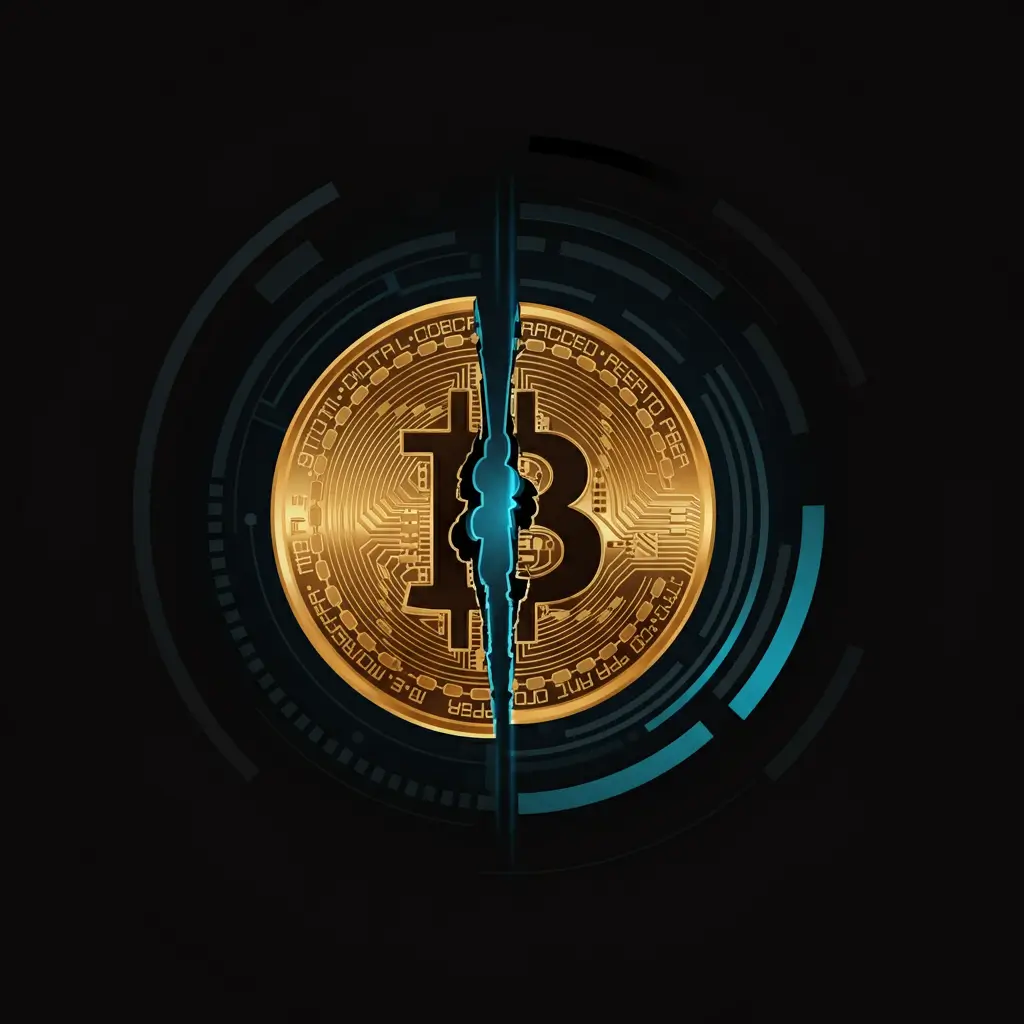What Is Bitcoin Halving?
Bitcoin halving is one of the most significant events in the cryptocurrency world. It occurs approximately every four years or after 210,000 blocks are mined. During this event, the reward miners receive for creating a new block is cut in half. This deliberate reduction is part of Bitcoin’s design to control the rate at which new bitcoins enter circulation. By reducing supply while demand potentially remains the same or increases, halvings create scarcity, which can ultimately impact Bitcoin’s price.
Miners play a crucial role in the Bitcoin ecosystem by solving complex cryptographic puzzles to validate and secure transactions. In return, they are rewarded with newly minted bitcoins. However, after each halving event, the amount of bitcoin miners earn drops by 50%, making mining less profitable unless Bitcoin’s price rises to offset the reduced rewards. This mechanism is not only a way to manage inflation but also a clever approach to mimic the scarcity of precious metals like gold.
Key Takeaways About Bitcoin Halving
- A Bitcoin halving happens every four years, reducing miner rewards by half.
- Halving limits the supply of new bitcoins, increasing scarcity and potentially boosting Bitcoin’s value over time.
- Bitcoin’s most recent halving occurred on April 20, 2024, reducing block rewards from 6.25 BTC to 3.125 BTC.
- The next halving, projected for 2028, will cut rewards further, reducing them to 1.625 BTC.
- The final halving is expected around 2140, capping Bitcoin’s total supply at 21 million coins.
Why Bitcoin Halving Matters
- Inflation Control
Bitcoin halvings serve as a built-in mechanism to control inflation. Unlike fiat currencies, which central banks can print at will, Bitcoin’s supply is capped at 21 million coins. Each halving ensures fewer bitcoins enter circulation, creating scarcity and helping to preserve the cryptocurrency’s value over time.
For example, while fiat currencies lose value due to inflation caused by overprinting money, Bitcoin’s fixed supply and deflationary nature make it a hedge against traditional financial systems. However, it’s important to note that while halvings protect Bitcoin from inflation, users are not shielded from the effects of inflation in fiat currencies that Bitcoin is often converted into for day-to-day transactions.
- Higher Demand and Potential Price Gains
When Bitcoin supply slows down after a halving, demand often increases, creating an environment for potential price surges. Historically, Bitcoin prices have experienced significant growth following halvings. For instance, past halvings in 2012, 2016, and 2020 were followed by sharp price increases over time, making these events a focal point for investors and speculators alike.
However, price increases are not guaranteed, and market conditions can vary. Demand for Bitcoin is influenced by factors such as market sentiment, global adoption, regulatory developments, and macroeconomic trends.
- Investment Opportunity
Though Bitcoin originally started as a decentralized payment method, it has evolved into a prominent investment asset. Halvings are often viewed as catalysts for price growth due to their impact on supply and demand dynamics. Reduced supply creates scarcity, which can attract both retail and institutional investors hoping to capitalize on long-term price appreciation.
For example, the 2024 halving coincided with significant developments like the approval of Spot Bitcoin ETFs, which initially drove capital into the cryptocurrency market. While this led to a temporary price boost, volatility persisted in the months following the halving event. As with any investment, buying Bitcoin during a halving comes with risks, and price trends may take years to fully materialize.
Challenges of Bitcoin Halving
- Impact on Miners
Halvings have a direct and significant impact on Bitcoin miners. By cutting block rewards in half, mining becomes less profitable—especially for smaller operations without access to advanced technology or economies of scale.
Large-scale mining companies, such as Marathon Digital Holdings, often prepare for halvings by expanding their operations and investing in more efficient mining equipment. For instance, Marathon increased its fleet to 231,000 miners ahead of the 2024 halving, ensuring it could maintain profitability despite reduced rewards. Meanwhile, smaller mining operations often struggle to keep up, with some forced to shut down due to rising operational costs and shrinking margins.
- Price Volatility
Halving events are often accompanied by heightened market volatility. While Bitcoin has historically experienced price increases after halvings, the timing and magnitude of these gains remain unpredictable. Investors may need to brace for months of price swings before any consistent upward trend emerges.
For example, after the 2020 halving, Bitcoin’s price took nearly six months to gain significant traction, eventually reaching an all-time high in late 2021. Similarly, the 2024 halving saw initial excitement followed by fluctuations as the market adjusted to changing conditions.
When Is the Next Bitcoin Halving?
The next Bitcoin halving is anticipated in 2028, reducing block rewards from 3.125 BTC to 1.625 BTC. Here’s a breakdown of notable past and future halving events:
- November 28, 2012: Block rewards reduced from 50 BTC to 25 BTC
- July 9, 2016: Rewards reduced from 25 BTC to 12.5 BTC
- May 11, 2020: Rewards reduced from 12.5 BTC to 6.25 BTC
- April 20, 2024: Rewards reduced from 6.25 BTC to 3.125 BTC
- Mid-2028: Rewards will reduce to 1.625 BTC
As of May 2024, approximately 19.7 million bitcoins are in circulation, leaving only 1.3 million left to be mined. This highlights Bitcoin’s increasing scarcity, which is expected to play a key role in its future valuation.
Should You Invest in Bitcoin During a Halving?
Many investors view Bitcoin halvings as opportunities due to the potential for price increases. However, it’s important to keep in mind that while halvings historically precede bull runs, price trends are not guaranteed. Gains may take years to materialize, and market conditions can change unexpectedly.
For instance, the 2024 halving coincided with landmark events like the approval of Spot Bitcoin ETFs, which initially boosted market enthusiasm. However, volatility and uncertainty lingered in the months that followed.
Ultimately, deciding whether to invest in Bitcoin during a halving should depend on your risk tolerance, financial goals, and understanding of the market. Crypto investments remain speculative, and it’s crucial to stay informed before making any decisions.
FAQs About Bitcoin Halving
- What Happens During a Bitcoin Halving?
During a halving, the block reward miners receive is reduced by 50%. This limits the supply of new bitcoins, increases scarcity, and can potentially drive up demand and price over time. - How Many Bitcoin Halvings Are Left?
As of 2024, there are approximately 29 halvings remaining before Bitcoin’s maximum supply of 21 million coins is reached. The final halving is expected around the year 2140. - Why Does Bitcoin Halve?
Bitcoin halvings are hardcoded into its protocol to control supply and mimic the scarcity of valuable resources like gold. By reducing the rate of new bitcoins entering circulation, halvings ensure Bitcoin remains a deflationary asset over time.
The Bottom Line
Bitcoin halving is a pivotal event that reduces the supply of new bitcoins, increases scarcity, and impacts miners, investors, and market dynamics. While halvings have historically driven price growth, outcomes remain speculative, and the market’s reaction can vary.
Whether you are a miner, an investor, or a crypto enthusiast, understanding Bitcoin halvings is crucial to navigating the broader cryptocurrency landscape. By staying informed, you can make smarter decisions about investing in Bitcoin and preparing for future halving events.

